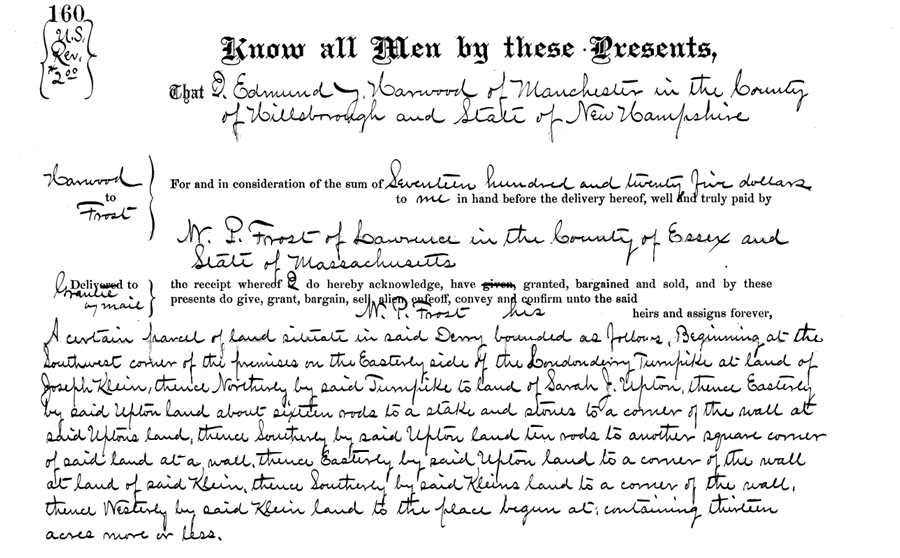The Magoon Place
R. Frost has moved upon the Magoon Place which he recently bought. He has a flock of nearly 300 Wyandotte fowls.
-- Derry News, October 5, 1900
Quoted in Robert Frost: A Life (2007), page 72.
Detail of map indicating the farm owned by S. Magoon from Derry, Rockingham Co. Seabrook, Rockingham Co. Rye, Rockingham Co. (with) Star Island, Gosport Ward, town of Rye (1892)
See the complete map
William Prescott (W. P.) Frost, the paternal grandfather of Robert Frost, bought the farm known as "The Magoon Place" for Robert Frost and his family to use. The offer was conditional, however. Robert could take ownership of the property only after he lived in the house and farmed the land for ten years.
Excerpt of the transfer of The Magoon Place from its then current owner, Edmund Y. Harwood to W. P. Frost
The 30-acre property contained two parcels. The first was described as "a certain parcel of land, situate in said Derry bounded as follows. Beginning at the Southwest corner of the premises on the Easterly side of the Londonderry Turnpike at land of Joseph Klein, thence Northerly, by said Turnpike to land of Sarah J. Upton, thence Easterly by said Upton land about sixteen rods to a stake and stones to a corner of the wall at said Upton's land, thence Southerly by said Upton land ten rods to another square corner of said land at a wall, thence Easterly by said Upton land to a corner of the wall at land of said Klein, thence Southerly by said Klein's land to a corner of the wall, thence Westerly by said Klein land to the place begun at; containing thirteen acres more or less."
W.P. Frost paid $1,725 for the property on September 25, 1900.
In addition to the thirty acres of land, it included a three-bedroom farmhouse. The structure conformed to a type common in New England called a connected farm, described by Thomas C. Hubka as containing a "big house, little house, back house, barn."
(Big House, Little House, Back House, Barn: The Connected Farm Buildings of New England, 2004).

 An official website of the United States government.
An official website of the United States government.


